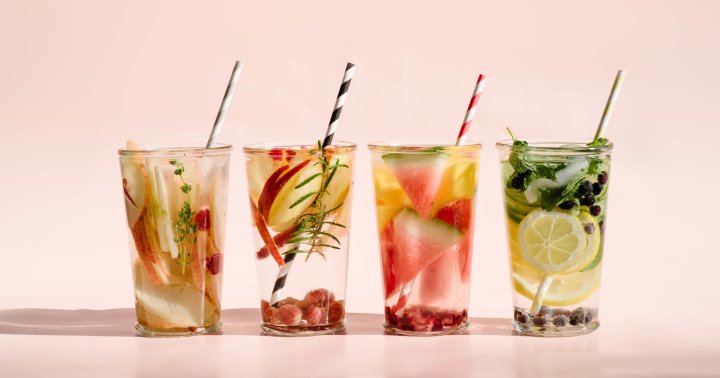Here's Everything (Yes, Everything!) You Need To Know About Going Gray
No matter how you choose to address graying hair—from coloring it to embracing it—the changes in hair fiber do require additional and unique care.


mbg Beauty Director
mbg Beauty Director
Alexandra Engler is the beauty director at mindbodygreen and host of the beauty podcast Clean Beauty School. Previously, she's held beauty roles at Harper's Bazaar, Marie Claire, SELF, and Cosmopolitan; her byline has appeared in Esquire, Sports Illustrated, and Allure.com.
Image by BONNINSTUDIO / Stocksy September 26, 2022 Our editors have independently chosen the products listed on this page. If you purchase something mentioned in this article, we may Welcome to the Beauty Breakdown, our series that dives into today's buzziest beauty topics. In each, we focus on a different theme and highlight all the need-to-know basics, common mistakes, and the best products to get your hands on. Silver, gray, white, platinum, salt-and-pepper. No matter how you describe your incoming gray strands, gray hair is a near universal experience shared by many of us at some point in time. And how you choose to wear your gray—whether by coloring it, embracing it, or somewhere in between—is entirely up to you. However, as hair loses pigment, the fiber does experience some changes. This means that you may need to make some adjustments to your hair care routine, no matter what. As someone who is just beginning their graying journey (which I chose to cover up with blonde highlights at this point in my life), I certainly can see differences in the texture of these budding new strands. So I tapped hair care experts, and some research, on how best to care for silvering hair. Here, a complete guide to caring for gray hair. 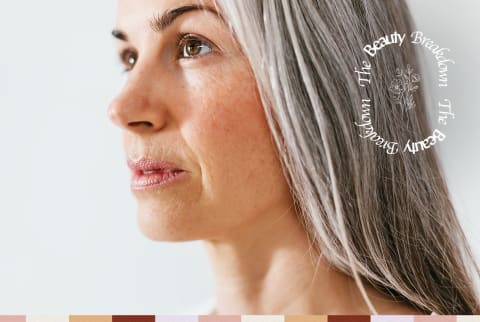

The 101 on gray hair.
No matter if your grays start in your 20s or not till your 80s. No matter if your onset of silver is triggered by stressful situations in life or good ole fashion genetics. No matter if your whole head turns platinum or just a bit of salt-and-pepper around the temples and hairline. No matter how you experience silvering hair, the mechanisms behind graying hair are all the same: Gray hair is simply the lack of color in a strand.
There are cells present in your skin (scalp included) called melanocytes that produce pigment, which colors your hair and skin. Due to genetics, age, health considerations, and external influences these melanocytes decrease in number. This decline is similar to how other elements in our skin decline, like collagen, elastin, and so on. With this change, hair is no longer as pigmented so it begins to appear more gray or white.
This may start in select areas on the scalp (temples for example), and then expand with time. When exactly this process starts is dependent on the individual—not to mention many things can influence how your hair grays, so it can be hard to predict when it will or how quickly.

7 things we’re getting wrong right now.
There’s a lot of misconceptions about gray hair—let’s address them.

The 3 steps you need to know.
Let’s establish the basics of graying hair.
1.
Come up with a game plan with a professional.
Whether you decide to cover your whole head with color or embrace the silver coming in, lean on your stylist’s or colorist’s expertise. "To avoid jeopardizing the health of the hair, you need a long-term plan," says celebrity colorist Abby Haliti. "This may take a few salon visits, but it is so worth it when you have the results you desired in the end and didn't risk the health of your hair." A hair pro will help you evaluate your (many!) options, teach you about your gray hair’s nuance, give you product recommendations, and more.
Because ultimately, there are several routes you can take when you start to go silver. For example, if your white strands are sporadic, you may consider blending them in with highlights (it’s often called “silver blending.”) Or if you’ve been dyeing your entire head, but now want to embrace the natural color, they can help make the process smoother—to avoid a blunt line. And if you only have a few gaps at target spots, they’ll help you find your perfect color match and “spot treat” with dye—so you don’t have to commit to a full process if you don’t want to.
In addition to advice about the color itself, they can help you find a new cut to complement your texture and platinum locks. While changing your style isn’t necessarily, it can help give your gray strands a fresher appearance.
2.
Update your hair care arsenal.
When hair starts to go gray, the texture changes. Silver strands often feel coarser, drier, and more wiry. In addition, they can also be more porous and prone to frizz. So this may mean a change to your standard go-to hair care products.
A few things to consider, if you haven’t already:
3.
Address oxidative stress.
Growing research shows the very strong connection between oxidative stress triggered by free radicals and premature graying. Much like oxidative stress depletes things in our skin like collagen and elastin, it is also thought to deplete pigment-producing cells.
As a small dossier: Oxidative stress is what happens when the body’s free radical levels outnumber the antioxidant levels for a prolonged period. This imbalance wreaks havoc on the body, hair included. Oxidative stress can be triggered by inflammation-causing diets, psychological stress, and external factors (like pollution).
You can reduce or manage your oxidative stress with lifestyle changes (you know, like stress management) and through antioxidants (both topical and oral). Look for hair care products that are loaded with antioxidant-rich botanicals, and opt for hair enhancing vitamins.
These certainly won’t reverse graying, but with regular use they can help your hair and scalp be its healthiest.

3 extra-steps to try.
While these aren’t essential tools in the arsenal, they will make a huge difference if you commit to them—especially if you are experiencing texture changes along with your graying.

The 6 products to try.
Gray hair requires extra care. Here are some products to add to your arsenal depending on your needs.
Best hydrating shampoo & conditioner combo:: Olaplex Blonde Enhancer Duo
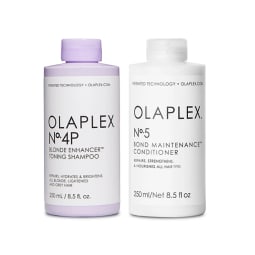
Olaplex Blonde Enhancer Duo
VIEW ON Olaplex | $60Pros:
While the pair works best together, you can by them separately if you happen to have another shampoo or conditioner you loveThe duo comes with a silk scrunchieOlaplex is beloved by pros and users alike for its bond-building formulas, which help repair dry, damaged hair. This pair starts with the sulfate-free purple-tinted shampoo that color corrects light hair (it’s marketed towards blondes, but as Brown once told me, it’s the shampoo she recommends for those with gray hair too). Then, following up with the conditioner will hydrate and soften the strands.
Best silver enhancer:: dpHue Gloss + Semi-Permanent Hair Color & Deep Conditioner
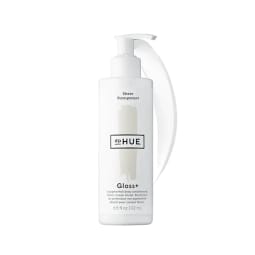
dpHue Gloss + Semi-Permanent Hair Color & Deep Conditioner
VIEW ON Sephora | $35Pros:
We recommend the clear gloss for enhancing full silver hues, but if your grays are more sparse you may consider one of the other 10 shades to help blend together the incoming strands.Give your silver locks a shot of shine with this at-home gloss. The semi-permanent treatment works to enhance your natural hue, without depositing any color or by using lightening agents. And it’s so simple to use (no mixing or multi-step routine here): Evenly coat clean, damp hair with the formula, let it sit for 5 to 20 minutes, and rinse. After, simply style your hair as normal, and marvel at the megawatt results.
Pros:
If you are experiencing shedding and loss alongside graying, this serum pairs nicely with the brand’s hair growth products tooThere’s been a lot of movement within the science of delaying gray hair; while it’s still a very new and emerging area of the beauty industry, this topical serum by Vegamour can help ease the appearance of gray hair on new hair growth. It does so with peptides, caffeine, and antioxidants that help neutralize oxidative stress at the root (which research shows can speed up the graying hair).
Pros:
The fresh, invigorating scent will adds a delightful flourish to the styling experienceThis multitasking serum can be used to lock in moisture on damp hair, as a heat protectant before a blowout, as a finishing product to add shine, or on the ends to ease the appearance of breakage. Not only will the clear formula (made with a plant-derived squalane) not stain silver hair, but it will help smooth frizz and manage coarse textures.
Best at-home color:: Madison Reed Radiant Hair Color Kit
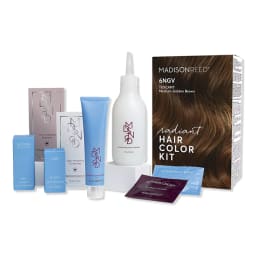
Madison Reed Radiant Hair Color Kit
VIEW ON Ulta | $30Pros:
With 36 shades (and a color-matching quiz) you’re sure to find the color for youIf you choose to cover up your incoming gray, the more power to you! I also know how challenging it can be to get into the salon for an appointment (not to mention: pricey.) Luckily, at home hair color has gotten quite sophisticated over the years. Most notably, Madison Reed makes kits that offer salon-worthy payoff using better-for-you ingredients and easy-to-follow instructions. A total at-home color game-changer.
Best root cover-up: Oribe Airbrush Root Touch Up Spray
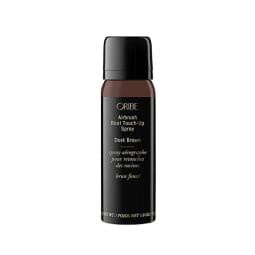
Oribe Airbrush Root Touch Up Spray
VIEW ON Amazon | $34Pros
Comes in 5 shades and is easy to applyIf you’re in between appointments, or just want to touch up grays before a big event, root cover-up products are like concealer for your strands. They come in many different varieties, from sprays (like this one), powders that you brush in, or crayons that you draw on. Just make sure you find one that is close enough to your natural hue, so the product doesn’t stand out.

The beauty breakdown.
No matter how you choose to address graying hair, the changes in hair fiber do require additional and unique care. So be sure to find a professional you trust to help you curate a plan and hair care routine that works for you and your lifestyle. Want more tips on how to hydrate the hair? Well, we have a guide for that.

 ValVades
ValVades 










